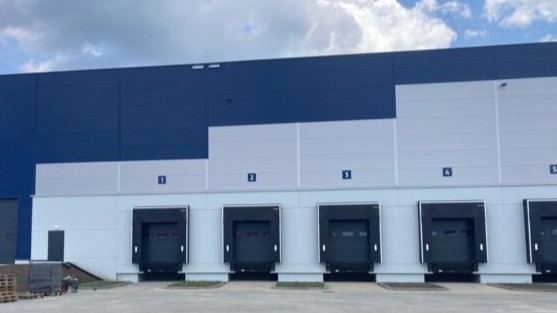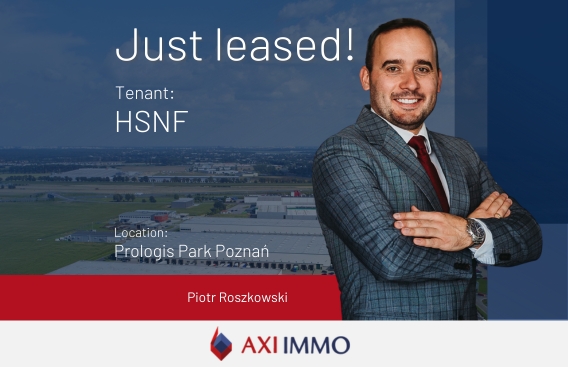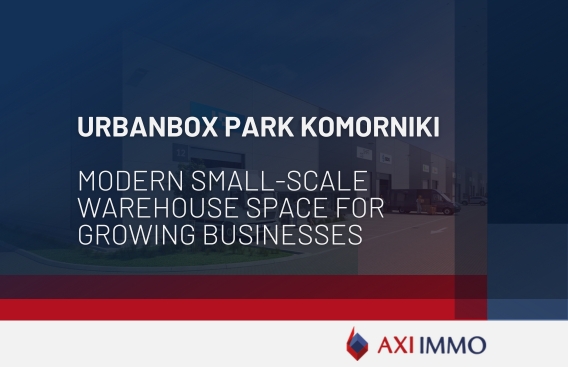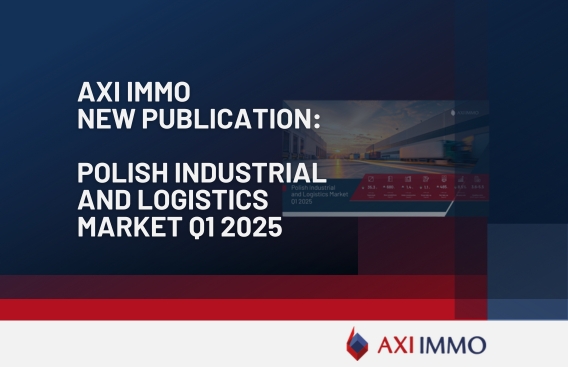Report: Warehouse market in 1Q 2019 – a change is coming to the largest warehouse markets in Poland
AXI IMMO Report Warehouse market in the first quarter of 2019 in Poland.
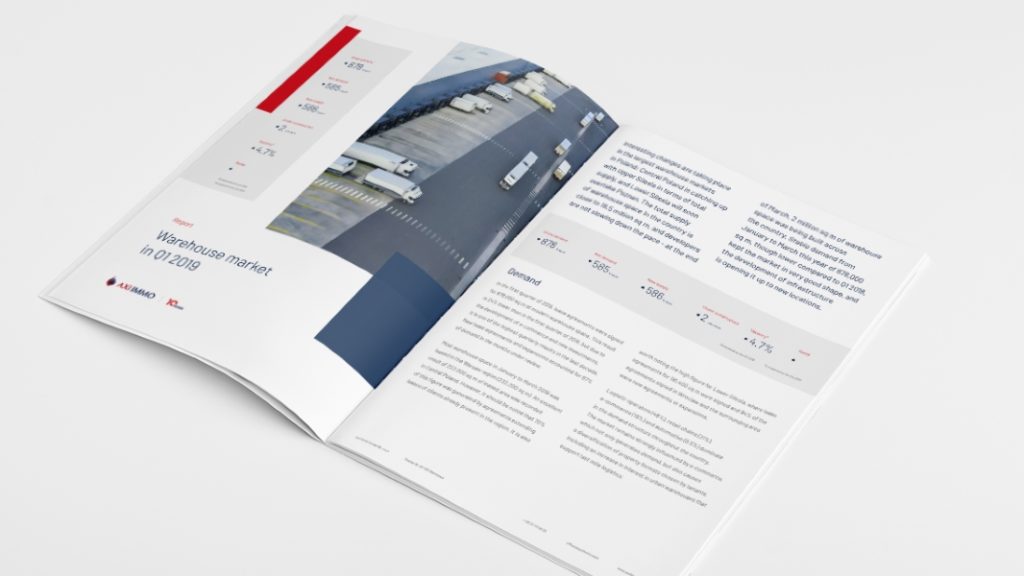
Interesting changes are taking place in the largest warehouse markets in Poland: Central Poland is catching up with Upper Silesia in terms of total supply, and Lower Silesia will soon overtake Poznan. The total supply of warehouse space in the country is close to 16.5 million sq m, and developers are not slowing down the pace – at the end of March, 2 million sq m of warehouse space was being built across the country. Stable demand from January to March this year of 878,000 sq m, though lower compared to Q1 2018, kept the market in very good shape, and the development of infrastructure is opening it up to new locations – these are the main conclusions from the latest report “Warehouse market in the 1 quarter of 2019 in Poland” prepared by the consulting company AXI IMMO.
| Download report: | Report Warehouse market in the 1 quarter of 2019 in Poland | Download for free: PDF|363 MB |
Demand: Central Poland dominated by present tenants, new agreements rule in Wroclaw
In the warehouse market in the first quarter of 2019, lease agreements were signed for 878,000 sq m of modern warehouse space. This result is 24% lower than in the first quarter of 2018, but due to the development of e-commerce and new investments, it is one of the highest quarterly results in the last decade. New lease agreements and expansions accounted for 67% of demand in the months under review.
Most warehouse space from January to March 2019 was leased in the Warsaw region (232,200 sq m). An excellent result of 222,000 sq m of leased area was recorded in Central Poland. However, it should be noted that 70% of this figure was generated by agreements extending leases of clients already present in the region. It is also worth noting the high figure for Lower Silesia, where lease agreements for 181,400 sq m were signed and 94% of the agreements signed in Wroclaw and the surrounding area were new agreements or expansions.– explains Anna Głowacz, Head of Industrial – Leasing Agency at AXI IMMO.
Logistic operators (46%), retail chains (21%), e-commerce (19%) and automotive (9.5%) dominate in the demand structure throughout the country. The market remains strongly influenced by e-commerce, which not only generates demand but also causes diversification of property formats chosen by tenants, including an increase in interest in urban warehouses that support last mile logistics.
Supply: The capital city supply exceeds 4 mln sq m, Central Poland is catching up with Upper Silesia in terms of total supply, and Lower Silesia will soon overtake Poznan
The total supply of modern warehouse space at the end of the first quarter of 2019 amounted to 16.5 million sq m. From January to the end of March this year, 585,800 sq m were delivered on the market, which means an increase of 86% compared to the same period last year (314,000 sq m). The largest market is Warsaw (over 4 million sq m); however, we saw an interesting change among top warehouse locations in the past quarter:
Due to high developers activity the total supply in Central Poland amounted to 2,7 mln sq m and we observe almost equalling Central Poland in terms of warehouse supply (2.7 million sq m) is Upper Silesia (2.75 million sq m). During the last three months a lot of the new projects, 101,8000. sq m, was delivered in Lower Silesia and 275,000. sq m is under construction. In the quarters ahead, we expect total stock in Wroclaw region will be higher than Poznan’s supply. – comments Anna Głowacz, Head of Industrial – Leasing Agency at AXI IMMO.
The Lodz region is where most investments were completed in the January–March period. Over 26% of the new supply is in Central Poland (153,300 sq m). In terms of the volume of space put into use, particular attention should be paid to Eastern Poland, which accounted for 20.1% of the new supply in the period from January to March (120,400 sq m). This result puts the region in second place, but it should be noted that the completion of Zalando Lounge in Olsztynek accounts for the whole figure. In third place was Lower Silesia with 101,800 sq m and a share in the new supply of 17.4%
At the end of March 2019, two million sq m of modern warehouse space was under construction throughout the whole country, of which 54% was in Upper Silesia (561,200 sq m) and Central Poland (526,100 sq m).
Vacancy rate: The speculative space and big relocations particularly observed in Poznan and Central Poland
In the first quarter of 2019, the average vacancy rate was 4.7%, which means a 0.5 p.p. change compared to the end of 2018. The largest increases in vacancy rates over the past quarter were recorded in Central Poland (from 5.3% to 7.2%) and Tri-City (from 4.8% to 6.3%). As in the last quarter of last year, the most free space available is in Poznan, which has a vacancy rate of 8.7%.
The high vacancy rate in this region is a consequence of the relocation of tenants and the completion of further speculative space over the past few quarters. A similar situation is expected in Central Poland in the coming quarters.
Rents: Continuation of increase. Construction cost and investment market reduce flexibility in negotiations
The majority of warehouse locations experienced a slight upward trend in rental rates in the past quarter. The largest increases in rents compared to the same period of 2018 were recorded in Wroclaw and Tri-City; however, rates in these regions still do not exceed the market average (respectively 2.70–2.90 euro/sq m and 2.60–2.90 euro/sq m). In the first half of 2019, the most attractive rates could be obtained by tenants in the vicinity of Warsaw and Poznan (2.2 – 2.5 euro/sq m).
Tenants who terminate lease agreements signed 3-5 years ago must bear in mind that under current market conditions rental rates comparable to their current contracts, especially in new projects, will be difficult to obtain. This is due to the increase in construction costs and interest in warehouse products among investors. These factors reduce the flexibility that developers have in setting base rates for renting warehouse space.
Forecasts: Stabilization and safe optimism
The European Commission’s forecasts for Poland’s GDP growth in the coming years are positive – GDP growth of 4.2% is expected in 2019, while for next year the forecast is 3.6%. Cause for optimism is also the high share of investments related to the development of the e-commerce sector and the redesigning of supply chains for this sales channel. Growth in Poland is expected even despite the possibility of economic slowdown for other European countries, which may to some extent affect the warehouse real estate market, especially in markets strongly linked to Western countries.
Due to the low availability of employees in the main logistics hubs of the country, both developers and tenants are looking for new, attractive locations in terms of road infrastructure and the labour market. For example, projects planned in places such as Olsztyn, Rzeszow and Swiebodzin.
In terms of warehouse space availability, large changes will be noticeable especially in Central Poland, where a lot of large-scale investments are underway and the relocation of tenants is planned. A natural consequence of the emergence of new speculative space and the release of existing modules will create pressure to reduce effective rates for renting warehouse space, especially in older facilities in the region.
In the majority of locations in the country, the following quarters will see a stabilisation or further increase in rental rates. In the coming months, the investment market will be interested in warehouse products at the current relatively high level. Investors will still focus on prime facilities and well-rented investments in cities.
Also read the newer Report: Polish Warehouse Market in Q1 2021
See also the report for the warehouse market in Poland summarizing the first half of 2019, which was prepared by AXI IMMO’s experts.
Recent articles
23 June 2025
Panattoni Park Warsaw West Błonie near Warsaw, Poland, with a new warehouse for logistics operator
Panattoni Park Warsaw West - key location and modern warehouse spaces
23 June 2025
HSNF renews lease at Prologis Park Poznań I – Beauty sector tenant continues operations in Greater Poland
HSNF continues its logistics operations in Poland in Poznan region
25 May 2025
UrbanBox Park Komorniki – modern small-scale warehouse space for growing businesses, near Poznan, Western Poland
Urbanbox Park Komorniki warehouse complex with modules from 167 sq m. in a strategic location near Poznań.
15 May 2025
AXI IMMO market report: Poland’s Industrial & Logistics Market Q1 2025
AXI IMMO presents its latest market report "Polish Industrial and Logistics Market Q1 2025."
